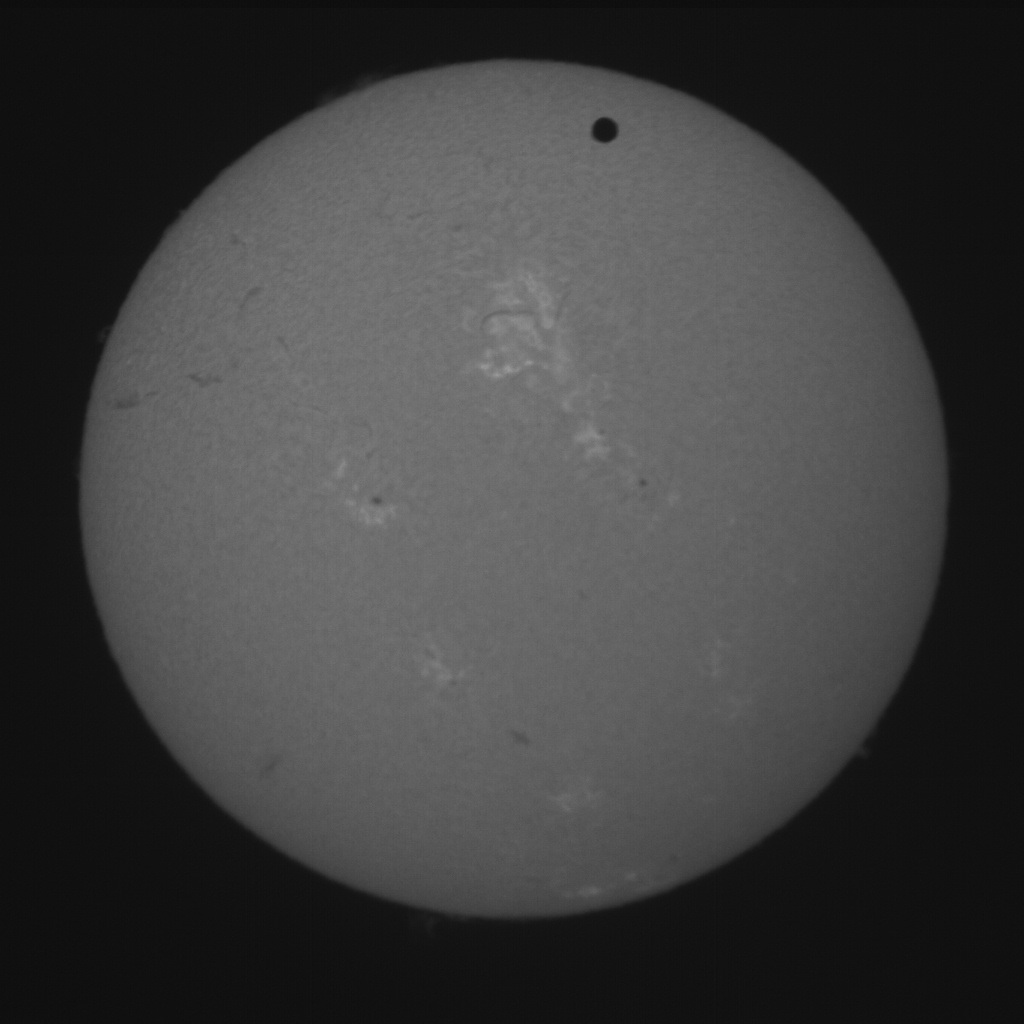Transit of Venus
On the 6th of June 2012, the planet Venus passed directly between the Sun and the Earth, casting a silhouette viewable using solar telescopes. Such transits are very rare, the next occurring in 2117. Summary movies of the entire transit are available for download in a number of formats.
AVI FLV MP4 MPG WMVWhat is the Transit of Venus?
The transit of Venus is similar to an eclipse in which the Moon passes between the Sun and the Earth, blocking the light from the Sun. However, since Venus is much further away from the Earth than the Moon, only a small fraction of the Sun's surface is obscured. This can be seen in the image below, taken by the Culgoora Solar Telescope during the transit of Venus on the 6th June, 2012.

Why are Transits so rare?
The Earth takes 365 days (i.e. one year) to orbit the Sun while Venus takes 225 days. The combination of these two orbital periods leads to the Earth-Venus-Sun forming a straight line roughly every 584 days. This is known as being 'in conjunction'. If the Earth and Venus were orbiting in perfectly aligned planes then a transit would occur during each of these conjunctions. In fact, both planets orbit in planes that are slight tilted compared with each other (see image below). This means that during most conjunctions, Venus is either just above or below the Sun as viewed from Earth and a transit does not occur. Occasionally Venus does pass though the Earth's orbital plane during a conjunction, casting a shadow on the Earth. As early as the 1600s astronomers were able to predict when transits would occur by determining these orbital planes. Transits occur in pairs separated by 8 years which then do not occur again for more than 100 years. The most recent transits were in 2004 and then 2012 but the previous event was in 1882. The next transit will not occur until 2117.

Why does ASWFC have a Solar Telescope?
The telescope that will be used to provide a live view of the transit is the ASWFC Solar telescope located at Culgoora in rural NSW. ASWFC uses this telescope to monitor the Sun as part of our Space Weather operations. In particular, parts of the Sun regularly erupt in spectacular explosions known as solar flares. The images from the telescope are used to alert forecasters in the Australian Space Forecast Centre that a flare has occurred and where it is located on the Sun. Knowing the location of the flare is important in forecasting whether the material blown off the Sun is likely to strike the Earth or not. More information about the telescope can be found in the Solar section of the website.





